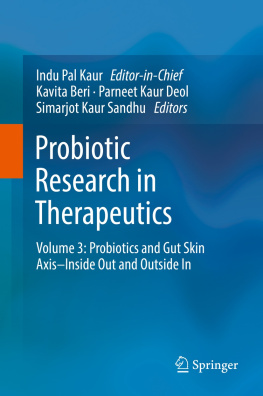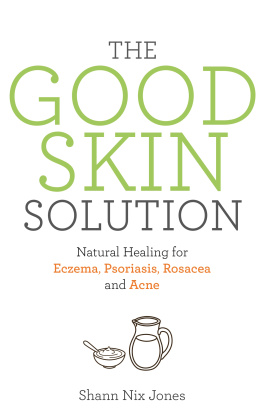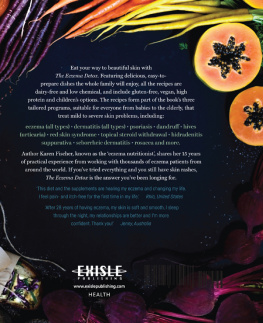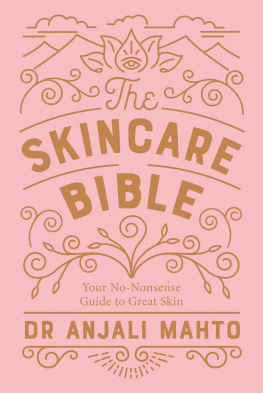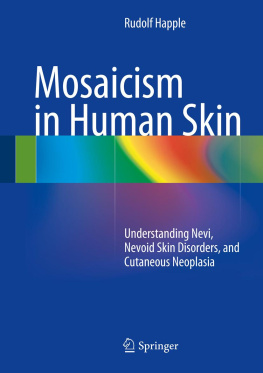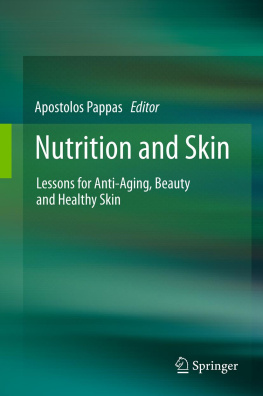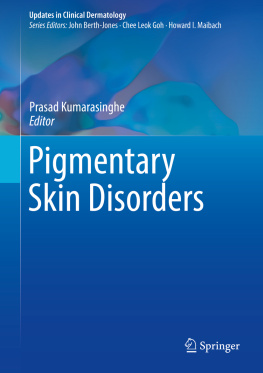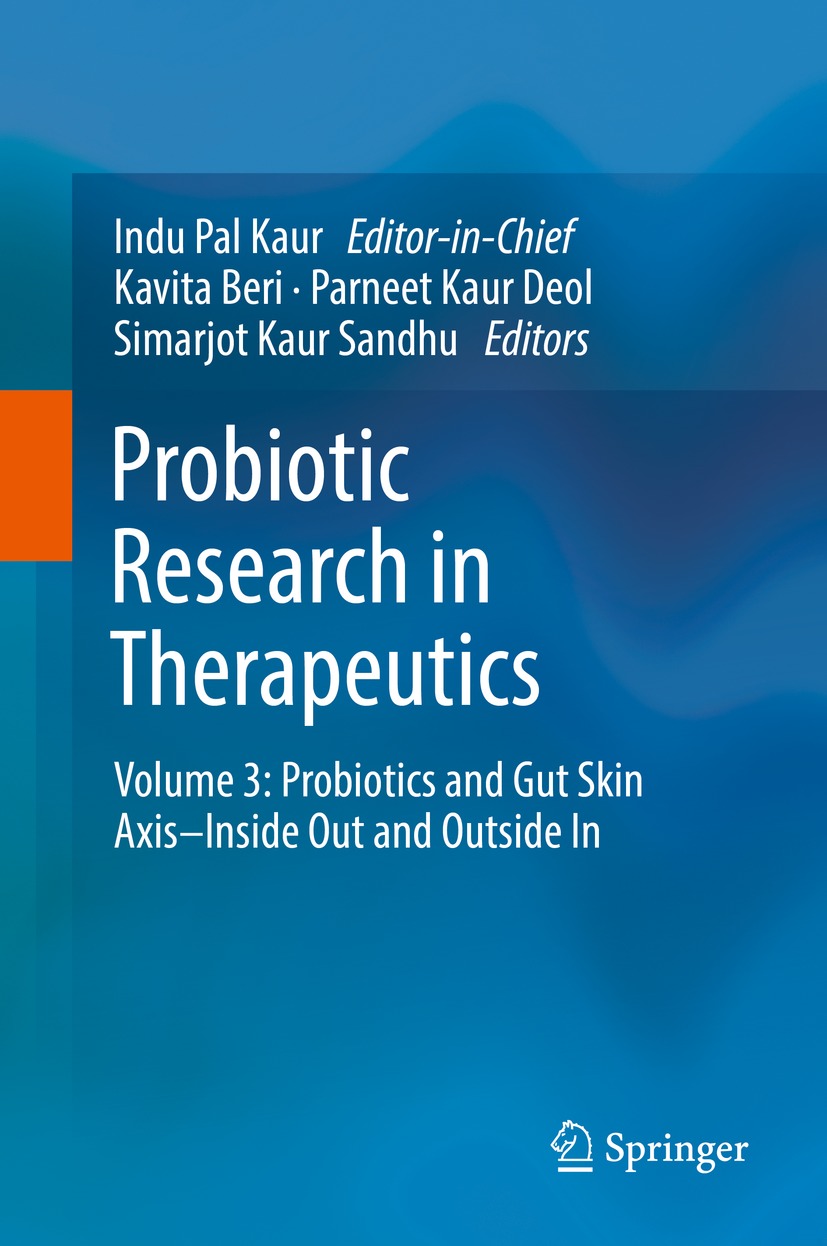Editors
Kavita Beri , Parneet Kaur Deol and Simarjot Kaur Sandhu
Editor-in-Chief
Indu Pal Kaur
Probiotic Research in Therapeutics
Volume 3: Probiotics and Gut Skin AxisInside Out and Outside In
1st ed. 2022

Logo of the publisher
Editors
Kavita Beri
Center for Dermal Research (CDR) and Laboratory for Drug Delivery (LDD), Rutgers-The State University of New Jersey, Piscataway, New Jersey, USA
Parneet Kaur Deol
G.H.G. Khalsa College of Pharmacy, Gurusar Sadhar, Ludhiana, Punjab, India
Simarjot Kaur Sandhu
Taro Pharmaceutical Industries Limited, Brampton, Ontario, Canada
Editor-in-Chief
Indu Pal Kaur
University Institute of Pharmaceutical Sciences, Panjab University, Chandigarh, Punjab, India
ISBN 978-981-16-5627-9 e-ISBN 978-981-16-5628-6
https://doi.org/10.1007/978-981-16-5628-6
The Editor(s) (if applicable) and The Author(s), under exclusive licence to Springer Nature Singapore Pte Ltd. 2022
This work is subject to copyright. All rights are solely and exclusively licensed by the Publisher, whether the whole or part of the material is concerned, specifically the rights of translation, reprinting, reuse of illustrations, recitation, broadcasting, reproduction on microfilms or in any other physical way, and transmission or information storage and retrieval, electronic adaptation, computer software, or by similar or dissimilar methodology now known or hereafter developed.
The use of general descriptive names, registered names, trademarks, service marks, etc. in this publication does not imply, even in the absence of a specific statement, that such names are exempt from the relevant protective laws and regulations and therefore free for general use.
The publisher, the authors and the editors are safe to assume that the advice and information in this book are believed to be true and accurate at the date of publication. Neither the publisher nor the authors or the editors give a warranty, expressed or implied, with respect to the material contained herein or for any errors or omissions that may have been made. The publisher remains neutral with regard to jurisdictional claims in published maps and institutional affiliations.
This Springer imprint is published by the registered company Springer Nature Singapore Pte Ltd.
The registered company address is: 152 Beach Road, #21-01/04 Gateway East, Singapore 189721, Singapore
Foreword by J. V. Yakhmi
The saying attributed to Hippocrates, the Father of Medicine, that Let food be thy medicine, and let medicine be thy food never felt more valid than now when we are challenged by a variety of lifestyle diseases. The relevance of holistic healing has increasingly been related, in recent years, to the gut microbiome, composed of bacteria, archaea, viruses, and eukaryotic microbes, all of which reside in our gut, and together have a strong potential to impact our physiology, both in health and in disease. When faced with a variety of diseases, our present-day knowledge lays emphasis on the importance of a healthy microbiome, not only limited to gut health but also to metabolic disorders, cancers, immunity, brain health, and skin health. Can we manipulate the gut microbiota by probiotic intervention toward disease prevention and treatment? That is precisely what is receiving the attention of a large number of scientists engaged in research on human health. The growing market interest in health benefits of probiotics has intensified research and investments in this area. With an overwhelmingly large number of new products based on probiotics on the shelves of the supermarkets and pharmacies, it can be inferred that the research in this area is at a very exciting stage. Though the intricate mechanisms involved in the importance of gut flora may require some basic scientific expertise, surfing through scientific claims on usefulness of probiotic therapy can catch the fancy of even a general reader.
I have known Prof. Indu Pal Kaur, Chief Editor of this book series, for the past 12 years and have been closely following her research interests which essentially hover around being a formulation scientist, be it for small and large molecules, phytochemicals, and probiotics. I have noticed her deep interest in trying to complement the observational data compiled in the traditional system of medicine with scientific rationale from currently available information. I have myself discussed with her, several times, the human microbiome and its manipulations for useful therapeutic options. She has been active in the topic of probiotics for a long time and had, in fact, published her first review on Potential Pharmaceutical Applications of Probiotics way back in 2002, which has been cited over 500 times to date. Her passion to bring probiotics into mainstream therapeutics is not limited only to the ailments of the gut, viz. inflammation, ulcers, and cancers, but is also aimed to extend it to other lifestyle diseases, such as depression, chronic fatigue syndrome, vaginal candidiasis, wound healing, and skin health.
The present ebook series, comprising five volumes, brings latest information and key insights on application of probiotics in cancer and immunological disorders, gut inflammation and infection, skin ailments, neurodegenerative disorders, and metabolic disorders. The contributing authors are recognized experts which ensures that each chapter affords a critical insight into the topic covered, with a review of current research, and a discussion on future directions in order to stimulate interest. Each volume itself covers a broad theme in detail by including chapters disseminating basic information in the field in such a manner that it would attract the attention of even a stray reader or intending consumers. Of course, the whole series of five volumes is designed with care so as to not only ignite the minds of graduating students for future research but also boost the confidence of health professionals, physicians, dieticians, nutritionists, and those practicing naturopathy by underlining the integrity of the data documented in the chapters of these volumes from well-established labs and groups. All in all, a very thoughtful compendium of probiotics research in therapeutics!
J. V. Yakhmi
Foreword by Manpreet Randhawa
We as human beings have been evolving and have developed different physical and genetic characteristics in response to varying climates and lifestyles. As a matter of fact, we are sort of creating a clean bubble (that is essentially free of so many things including the microorganisms living on our skin) around us, to feel more secure and safe. However, during this transition we have completely forgotten about the ecosystem supporting us, until we see the continued rise of metabolic disorders such as obesity, diabetes as well as skin diseases such as eczema, psoriasis, and atopic dermatitis. Now, let us take a step back to reflect on these learnings and change our perception to support and enhance our ecosystem.
Thinking about our skin for a momentit is the bodys largest organ and offers the first level of defenseso taking good care of it is very essential. As a first line of protection, our skin is covered with a diverse set of microorganisms called the microbiome, which plays a very active role in maintaining healthy-looking skin. This microbiome tends to stay quite stable unless something drastic happens. Besides the skin, the microbiome tends to be a quintessential part of our gut as well. The gut microbiome maintains homeostasis throughout the body, but can majorly affect our other organs, especially our skin, if it becomes unbalanced. If we experience any issues with our gut, such as inflammation, leaky gut, or digestion problems, our skin is usually the first place we notice problems. This could be one of the reasons behind a well-known saying whatever you eat will reflect on your skin; hence, you may consider skin as a barometer of what is going on inside the body. So, I can say that the skin-gut axis is not something new, but something that has lately been explored at a scientific level to understand its mechanisms of action and the end results.

